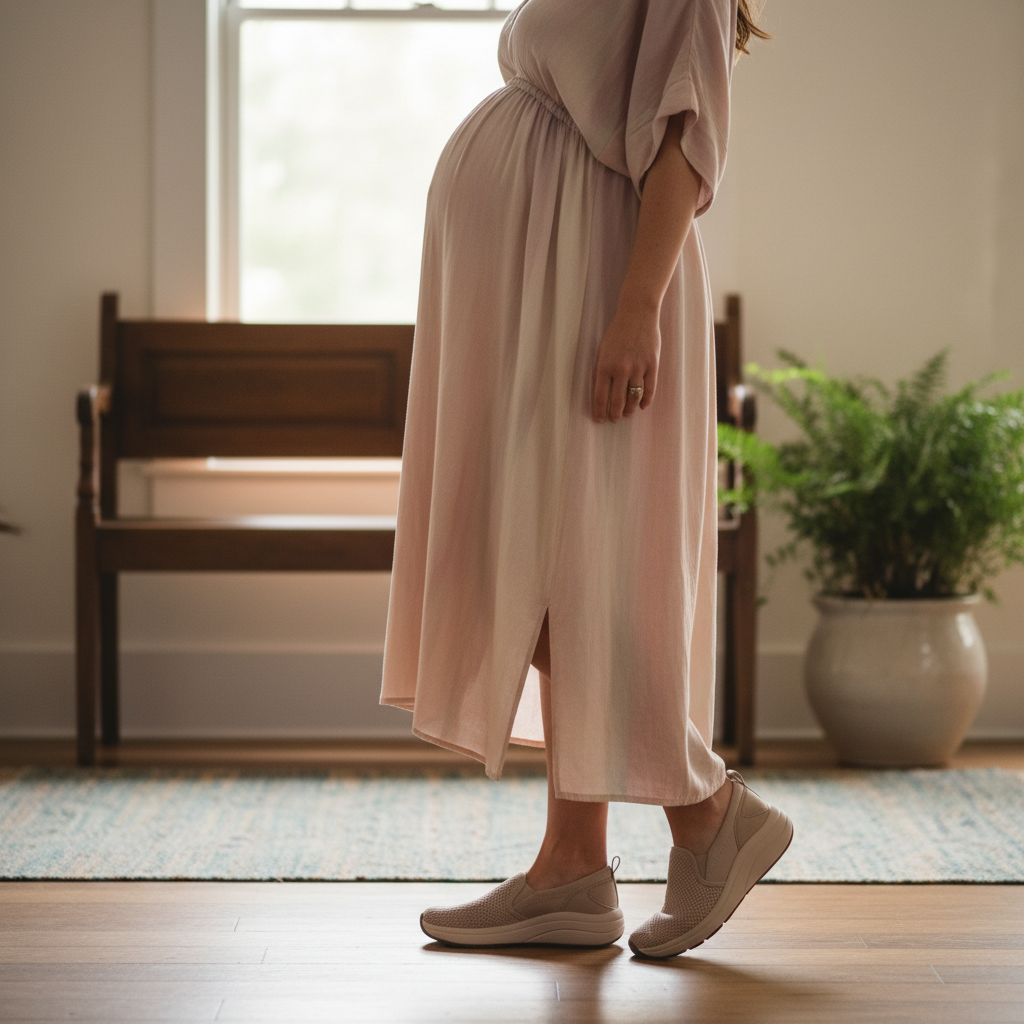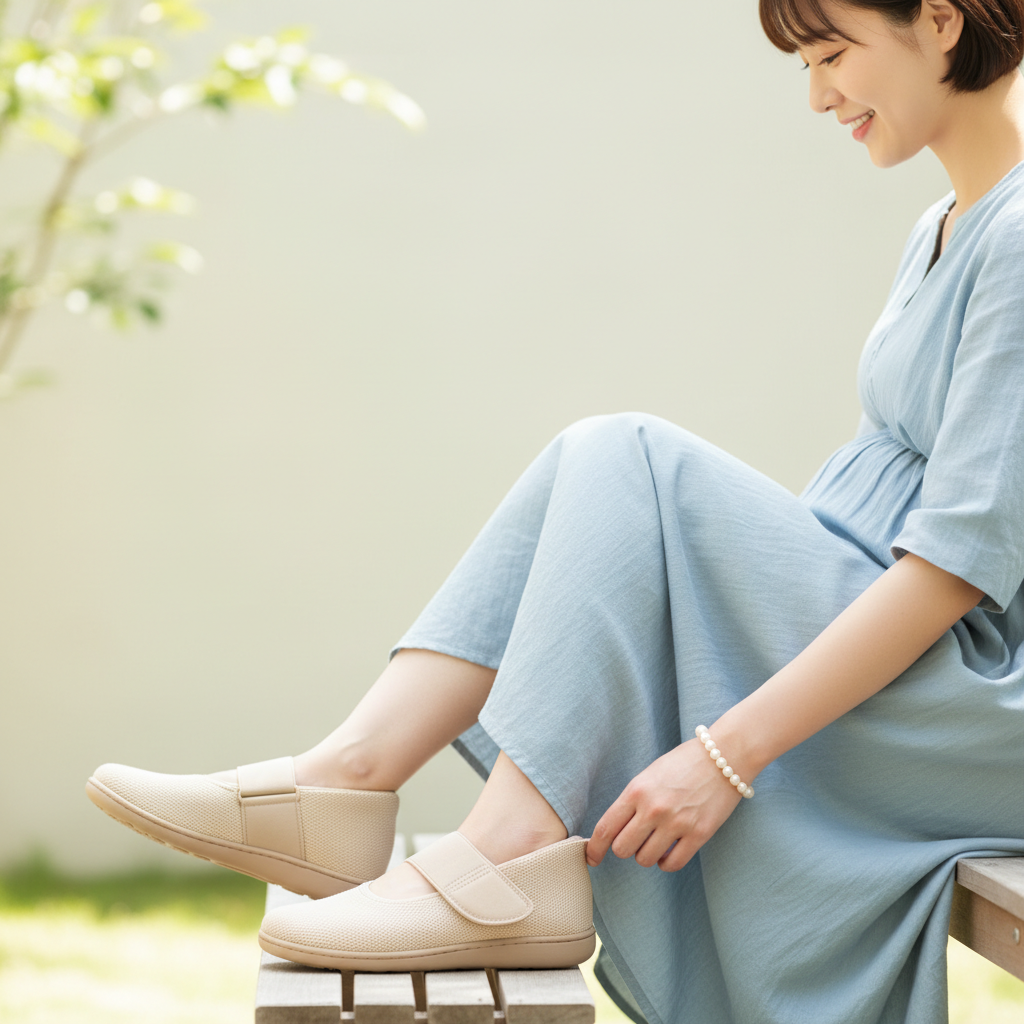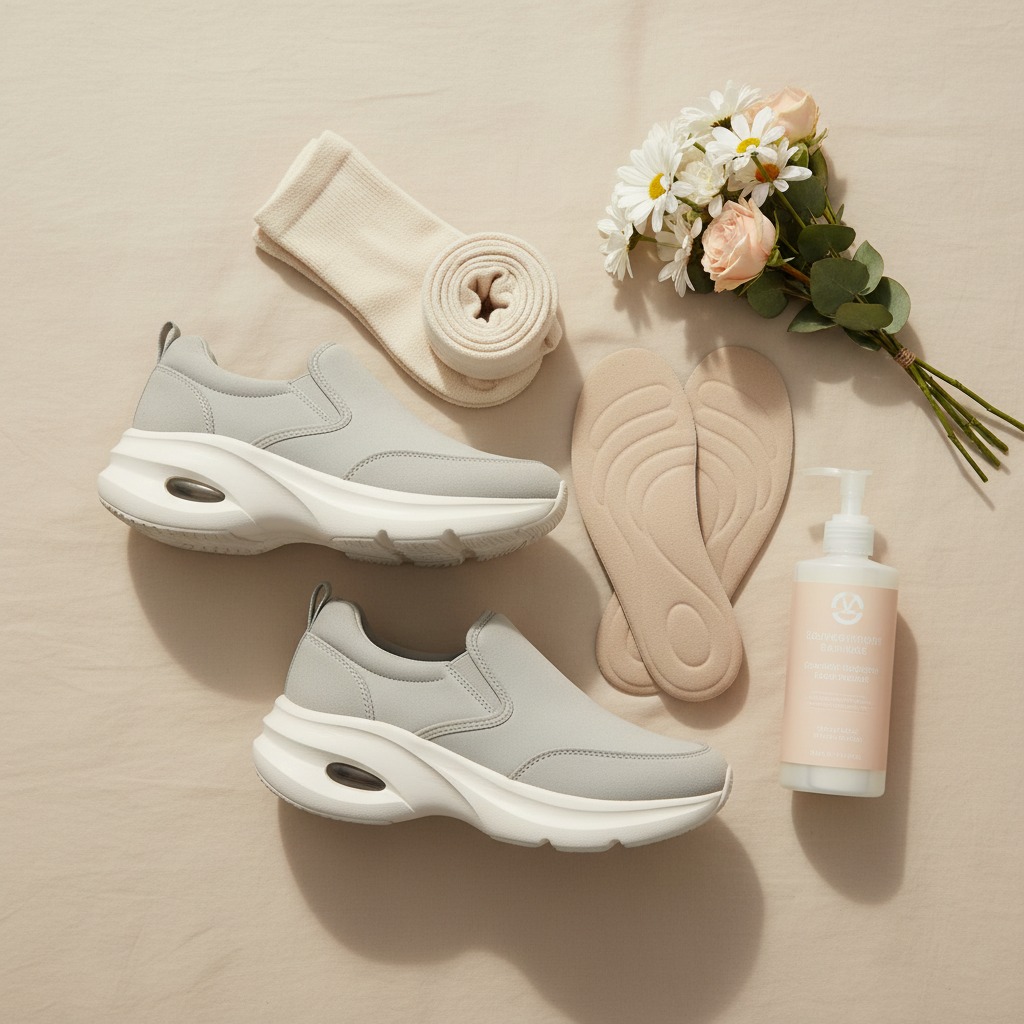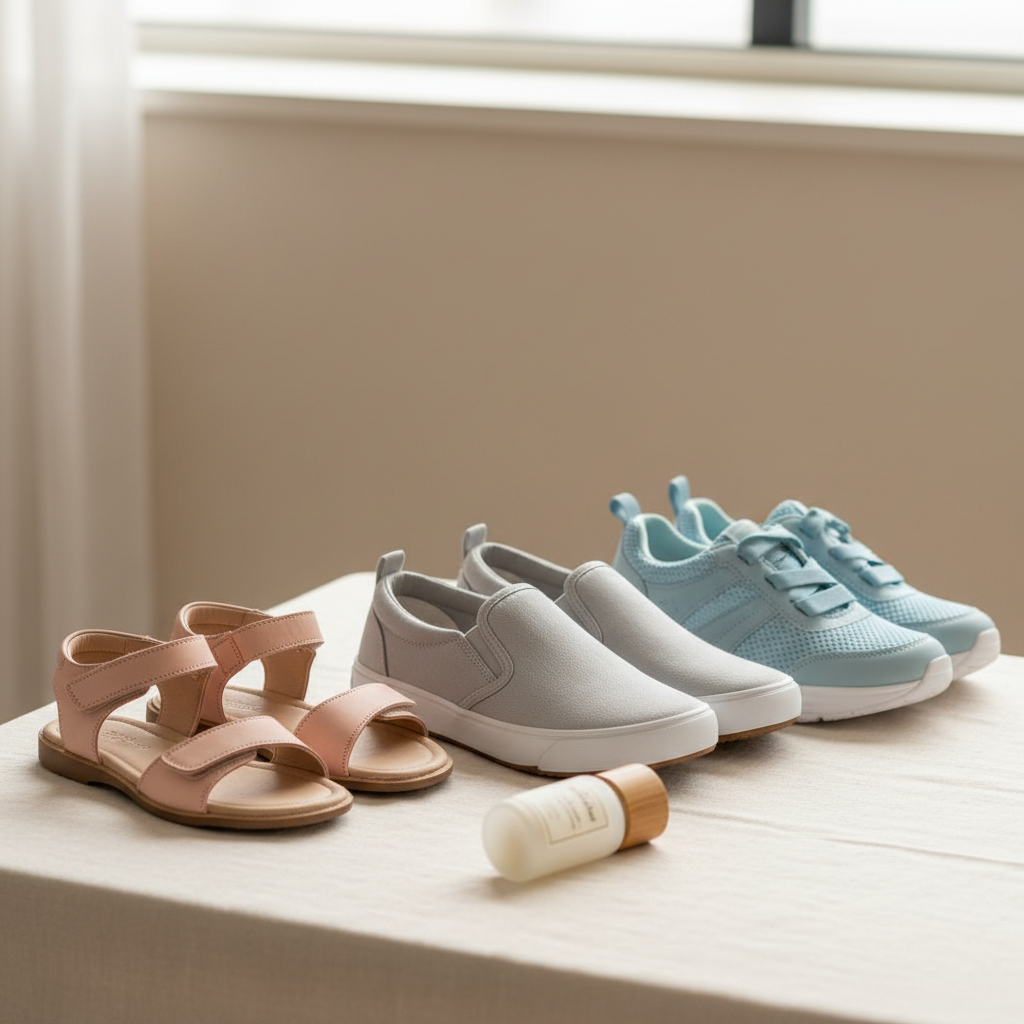
Choosing the Right Footwear for Pregnancy Support
During pregnancy, your feet undergo significant changes that can make your regular shoes uncomfortable or even painful to wear. As your body adapts to support your growing baby, especially in the second trimester, finding appropriate footwear becomes essential for maintaining comfort and preventing foot-related discomfort.
Key Highlights
Here’s what you need to know about selecting pregnancy-friendly footwear:
- Feet commonly swell and may increase by a full shoe size during pregnancy
- Proper arch support helps prevent plantar fasciitis and reduces back pain
- Slip-on styles with adjustable features accommodate changing foot size
- Breathable materials prevent overheating and minimize swelling
- Low-heeled shoes with good traction reduce fall risk and improve stability
Understanding Foot Changes in Pregnancy

During pregnancy, your body produces a hormone called relaxin, which loosens ligaments throughout your body—including those in your feet. This natural process, combined with increased blood volume and fluid retention, causes feet to flatten and widen as pregnancy progresses. According to the American College of Obstetricians and Gynecologists, many women experience a permanent increase in shoe size after pregnancy due to these structural changes. The effects typically become most noticeable during the 2nd trimester when fluid retention increases and your center of gravity shifts to accommodate your growing baby.
The Impact of Weight Distribution
As your pregnancy advances, your growing belly shifts your center of gravity forward, changing how weight distributes across your feet. This redistribution places additional pressure on the metatarsal (ball of the foot) area and can contribute to arch flattening and heel pain. Research from the Journal of Foot and Ankle Research shows that these biomechanical changes often lead to discomfort in standard footwear and may contribute to balance issues. Wearing shoes with inadequate support during this time can worsen common pregnancy complaints like back pain and may increase your risk of falls as your balance naturally becomes compromised.
Essential Features for Pregnancy Footwear

Proper arch support is perhaps the most critical feature in pregnancy footwear, as it helps maintain proper foot alignment despite the increased pressure. Shoes with contoured footbeds that cradle your arches can help prevent the development of plantar fasciitis, a common painful condition that affects many pregnant women. The American Podiatric Medical Association recommends shoes with cushioned soles that absorb shock while walking, which can help reduce pregnancy headaches second trimester and other discomforts that stem from the impact of walking. If you’re experiencing significant foot or back pain, consider shoes with removable insoles that allow for the addition of custom orthotics.
Accommodating Changing Foot Size
As your pregnancy progresses, you may notice your shoes becoming tighter, particularly in the afternoon when swelling typically peaks. Look for shoes with adjustable closures like Velcro straps, laces, or buckles that can be loosened throughout the day as needed. Many women find that purchasing shoes a half-size larger than their pre-pregnancy size provides necessary room for swelling. The Mayo Clinic notes that pregnancy-related foot swelling is normal but can be managed with proper footwear and regular foot elevation. Shoes with stretchable uppers made from materials like soft leather or fabric blends provide additional give to accommodate fluctuating foot size.
Practical Shoe Styles for Pregnancy

As your pregnancy advances into the second trimester, consider transitioning to slip-on designs that don’t require bending over to put on—an increasingly challenging movement as your belly grows. Supportive athletic shoes with elastic laces, comfortable loafers, and adjustable sandals with back straps all offer practical options that combine convenience with support. Many pregnant women find that wide-width athletic shoes provide the stability and comfort needed for daily activities. Shoes with a slightly elevated heel (no more than 1-2 inches) can sometimes provide relief for women experiencing heel pain, though completely flat shoes should be avoided as they provide minimal support.
Materials and Safety Considerations
The materials your pregnancy shoes are made from significantly impact their comfort level. Breathable fabrics like mesh and canvas help reduce foot temperature and minimize swelling, particularly important during the 2nd month pregnancy and beyond. Non-slip rubber soles with good traction patterns are essential for preventing falls as your balance changes. The Orthopedic Section of the American Physical Therapy Association emphasizes the importance of shoes with flexible forefoot areas that allow for natural foot movement while maintaining stability. For women who need to maintain a professional appearance, consider supportive flats with memory foam insoles or low, chunky heels that distribute weight more evenly than narrow heels.
Finding Your Perfect Fit
Your ideal pregnancy shoes should feel comfortable immediately—there should be no “breaking in” period. When shopping, try on shoes in the afternoon when feet are typically more swollen, and walk around the store to ensure they provide adequate support. The American Podiatric Medical Association recommends checking that there’s a thumb’s width of space between your longest toe and the shoe’s end to accommodate foot expansion. As your pregnancy progresses, you may need to reassess your footwear needs, especially if you’re experiencing back pain in the second trimester. Remember that good footwear is an investment in your comfort and safety during pregnancy.
Maintaining Foot Health Beyond Shoes
While proper footwear forms the foundation of pregnancy foot care, complementary strategies can enhance comfort. Regular foot stretching and gentle massage can help relieve tension and improve circulation. The American College of Foot and Ankle Surgeons recommends daily foot elevation to reduce swelling, especially after long periods of standing or walking. For women experiencing significant discomfort, consider safe ways to relieve pain like warm foot soaks or supportive compression socks (with your healthcare provider’s approval). Many pregnant women also benefit from modifying workouts in the second trimester to include swimming or water aerobics, which take pressure off feet while maintaining fitness.
Conclusion
Investing in proper footwear during pregnancy is more than a comfort choice—it’s a health decision that supports your changing body. By understanding the unique needs of your feet during this special time and selecting shoes with appropriate support, materials, and adjustability, you can minimize discomfort and focus on enjoying your pregnancy journey. Remember that your feet provide the foundation for your entire body, and supporting them properly benefits not just your comfort but your overall wellbeing as you prepare to welcome your little one.
Sources
- American College of Obstetricians and Gynecologists: Exercise During Pregnancy
- Journal of Foot and Ankle Research: Pregnancy-related changes in foot structure
- American Podiatric Medical Association: Pregnancy and Your Feet
- Mayo Clinic: Pregnancy and foot health
- Orthopedic Section of the American Physical Therapy Association: Guidelines for Exercise During Pregnancy
